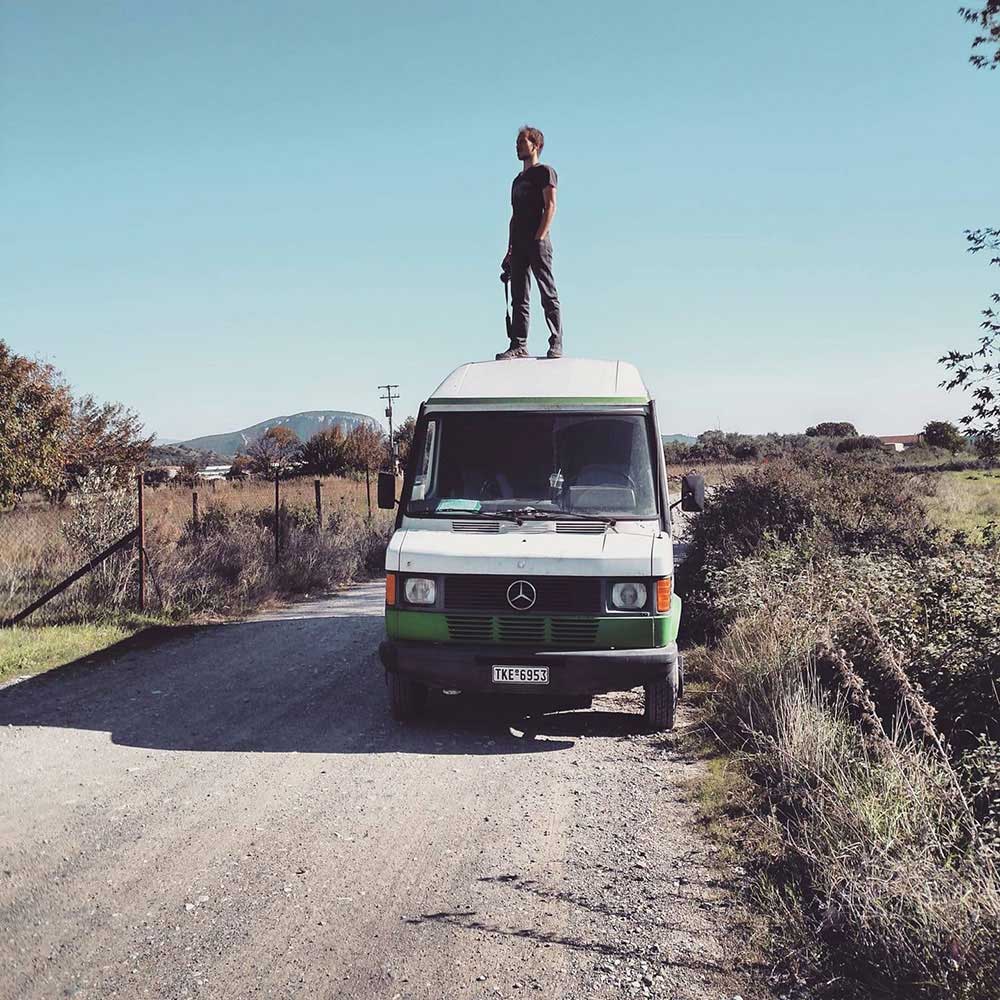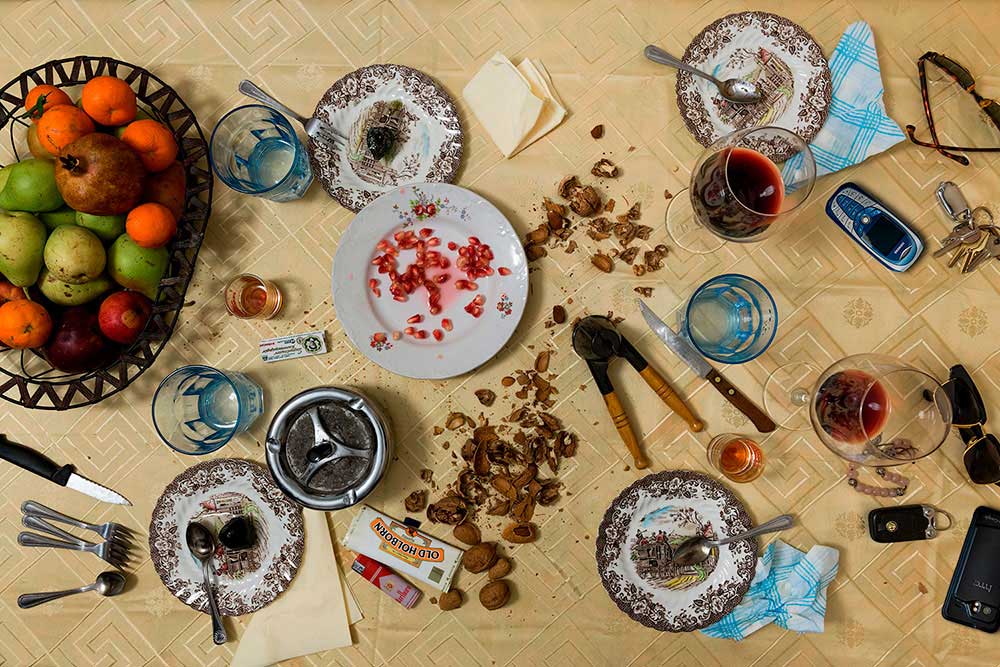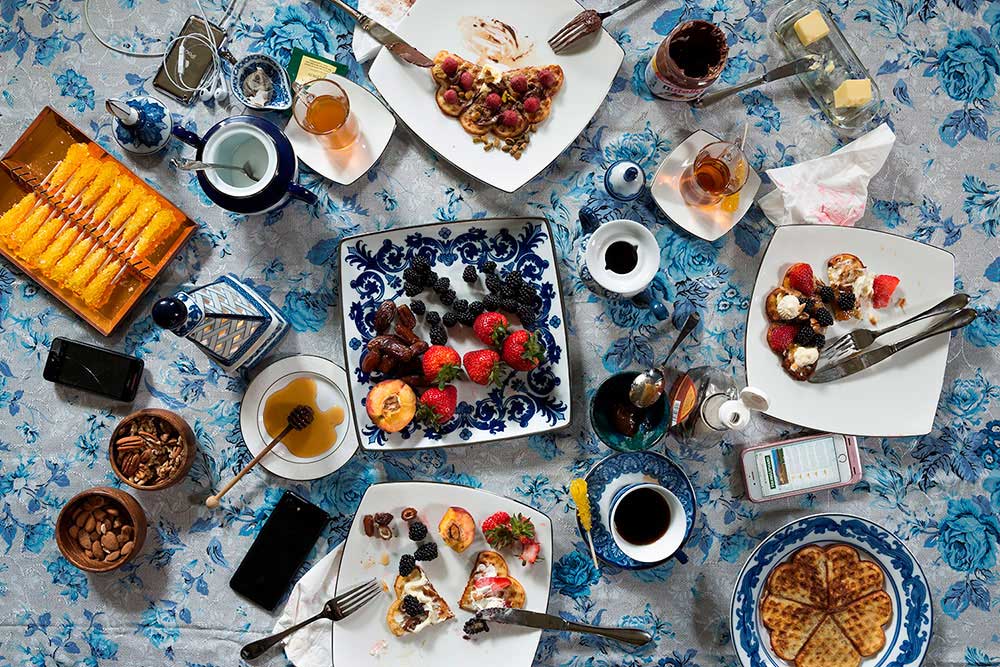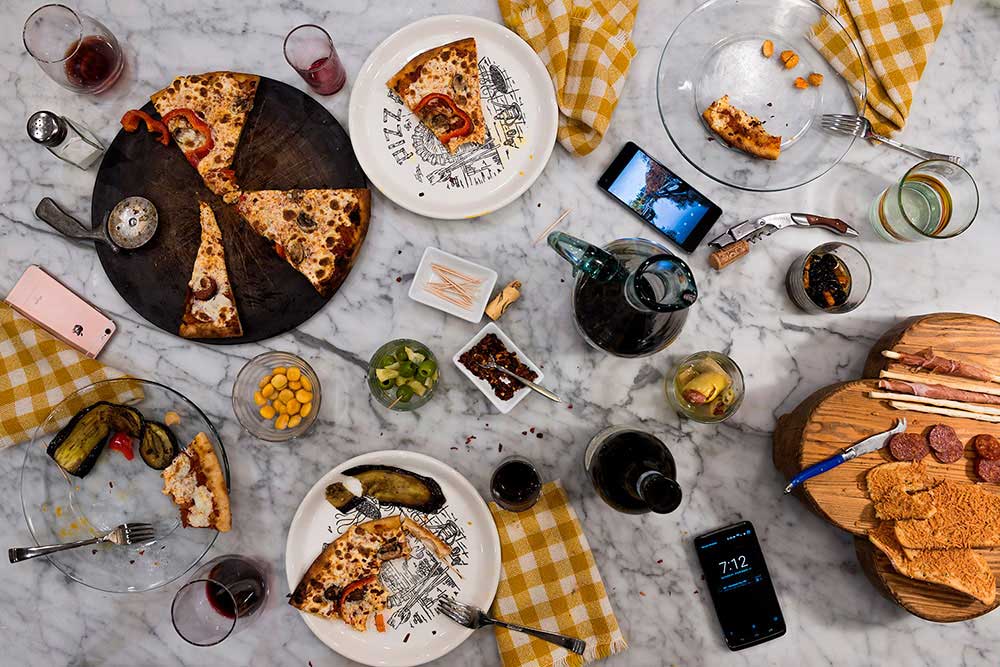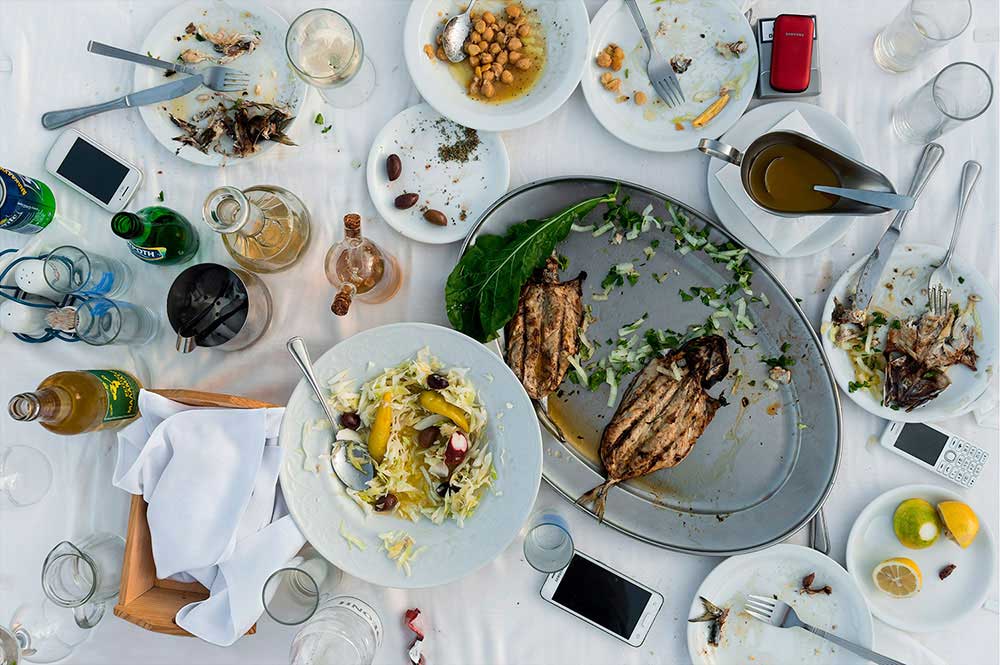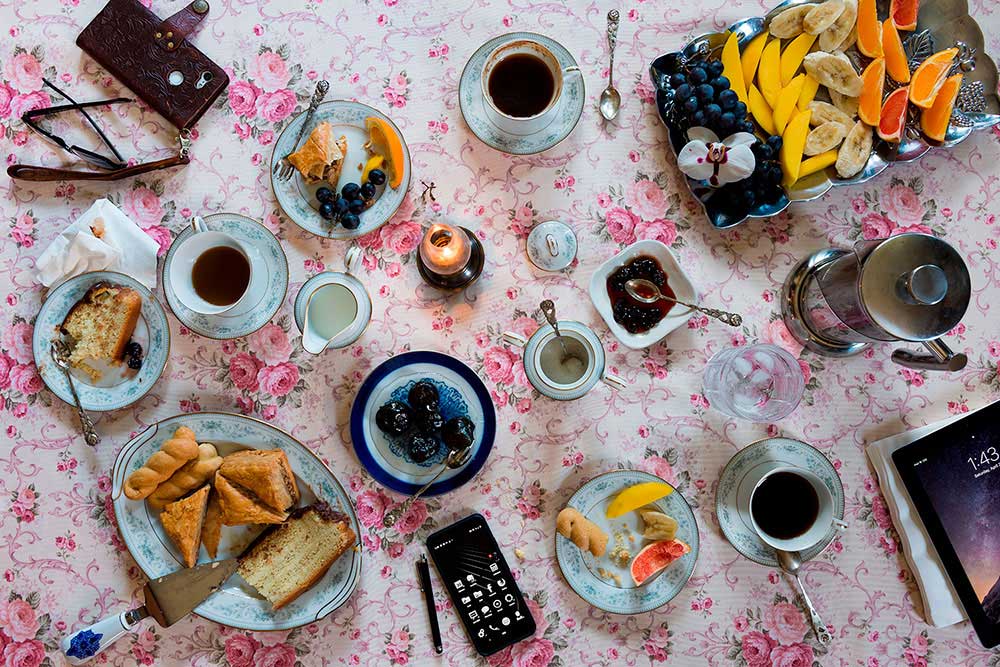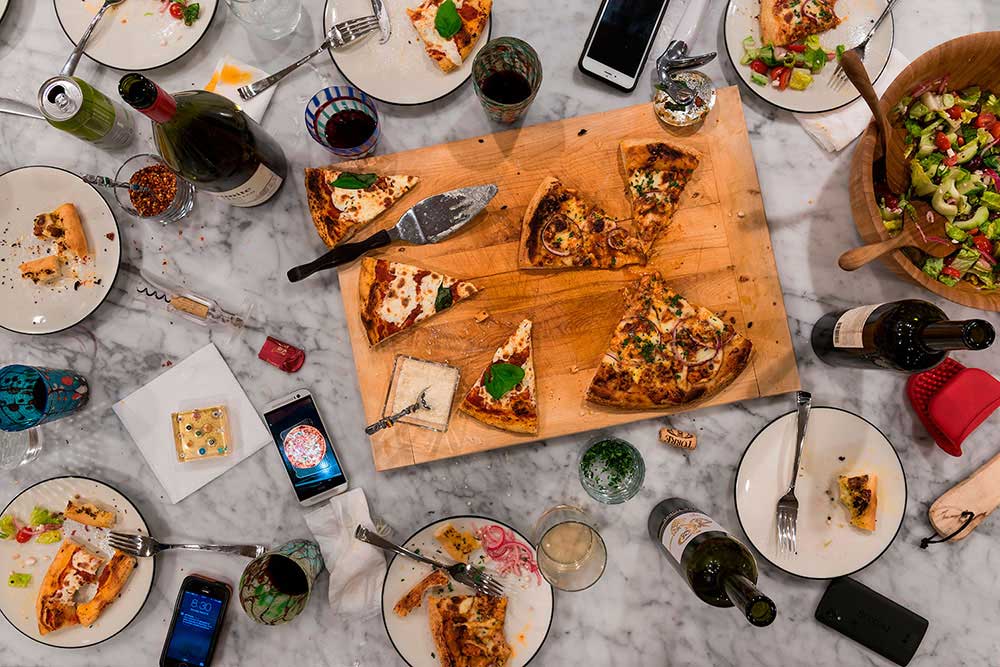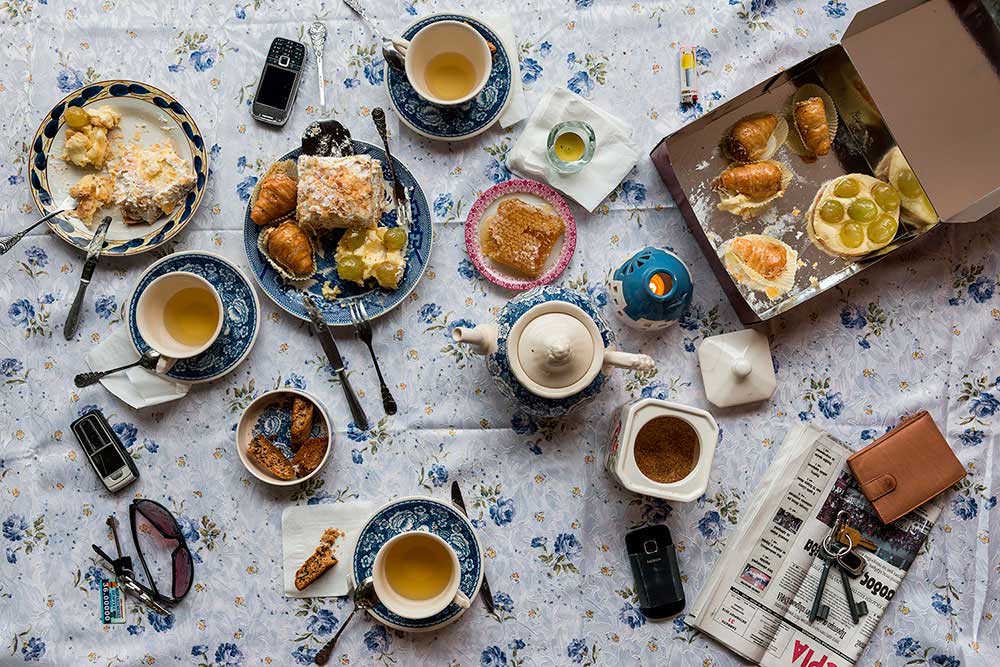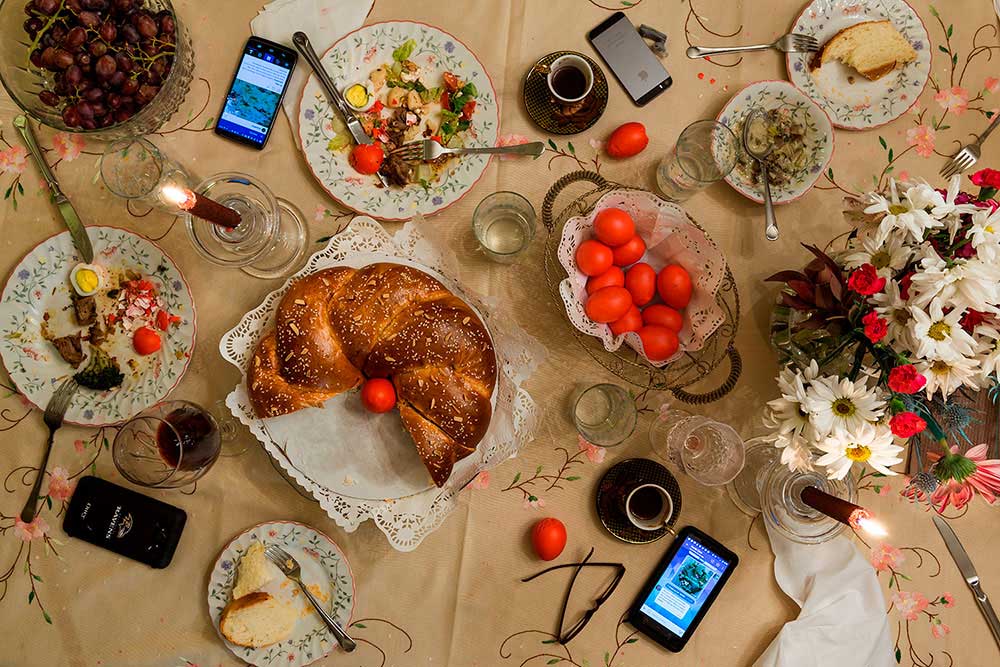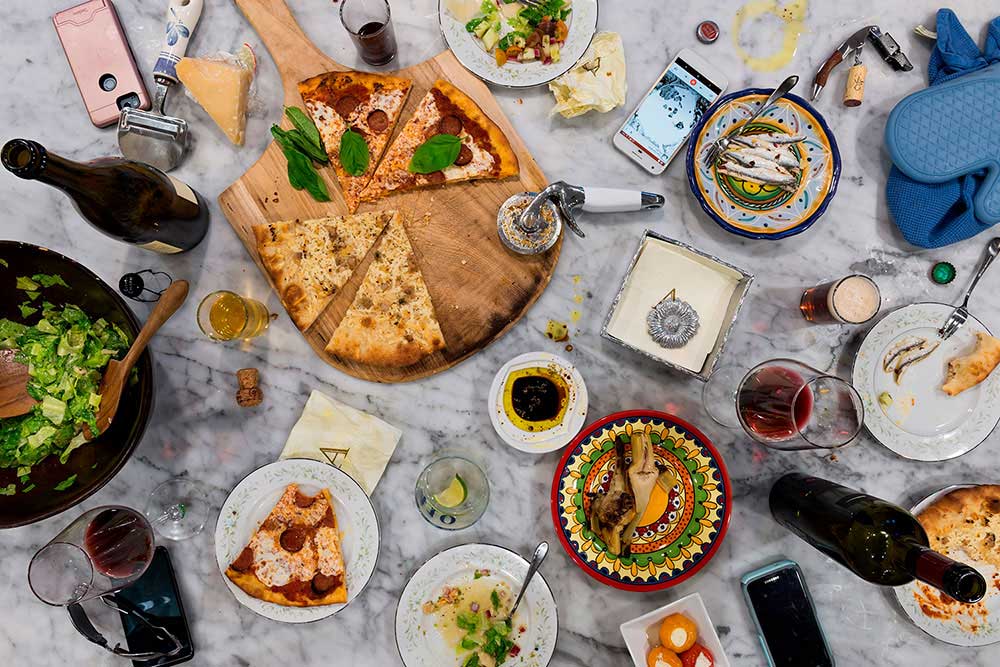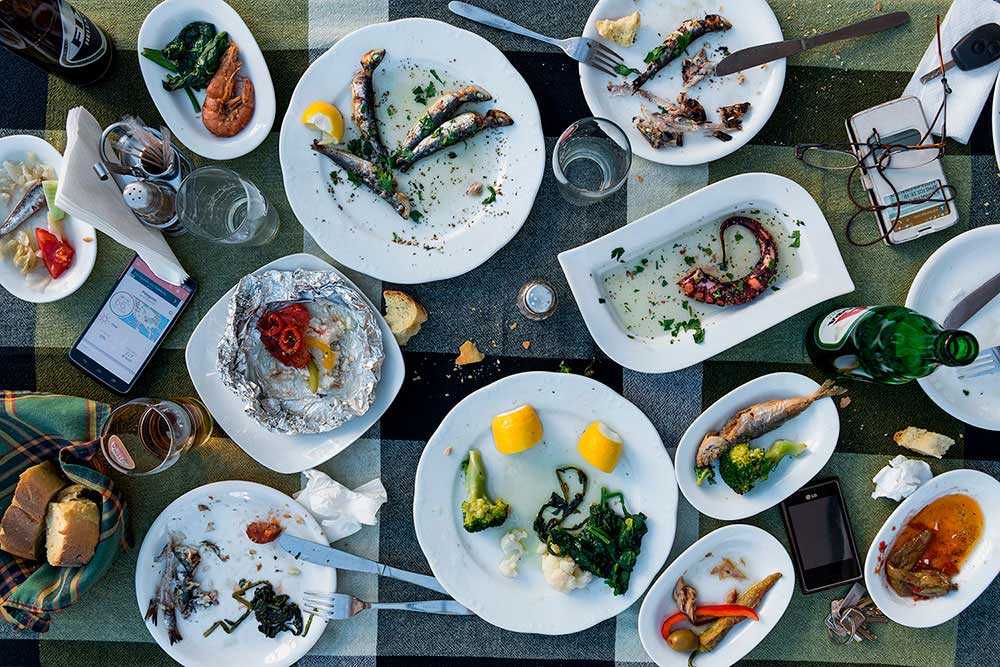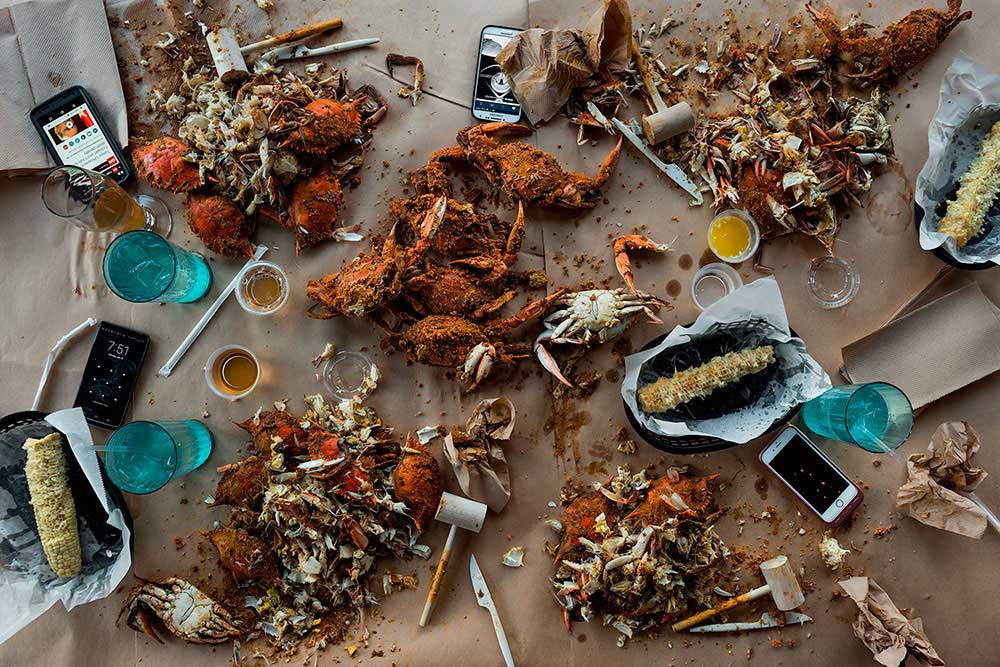Christos was raised as a first-generation Greek-American, a son of immigrants. These two distinct cultures forged his personal and creative evolution.
Socioeconomics, culture, history, and architecture fuel his intellectual and emotional intrigue, while the artist’s photographic work probes themes of identity, connection, nostalgia, and isolation. He says about his practice:
The nexus between an evolving sensibility and a dynamic world is the will to perpetually explore new terrain. We live in hurried and frenetic societies broadcasting endless stimuli, inundating our waking lives and shaping our beliefs—an exponentially-hijacked 21st-century mindset. This endless tangle of information obligates us to discern truth from fiction, tasteful vs. boilerplate. Photography’s remarkable capacity to communicate ideas and narratives inspire me to embody insight and intent within the frame. My ambition is to make relevant and stimulating photographs reflecting evolving perspectives, while expressing ingrained, palpable awareness.
The artist’s springboard originates in the visual arts, consummated by a BFA from the University of Maryland. Since 2006 he has pursued fine-art professionally, having collaborated with a diverse array of professionals, including designers, consultants, advisors, dealers, and galleries in residential and corporate arenas nationwide. Christos is represented by and works with galleries throughout the US. He is a Sondheim Prize and Critical Mass finalist and was shortlisted for the Athens Photo Festival. His photographs have been exhibited at venues such as Baltimore Museum of Art, Grimaldis Gallery, Candela Gallery, Tew Galleries, Isabella Garrucho Fine Art, Blue Sky Gallery, Houston Center for Photography, Center for Photographic Art in Carmel, Colorado Photographic Arts Center, among others. Christos’ work resides in private and corporate collections throughout the country and abroad. He has also been published in Musée Magazine, Prix de la Photographie de Paris, Lenscratch, F-Stop Magazine, International Photography Awards, BmoreArt, and the Baltimore Sun. [Official Website][Printed Edition][Digital Edition]
‘Conversations’, explores your experience of being raised as a first-generation son of Greek Immigrants with traditional European values, in America. The images are inspired by the bonding and togetherness fostered by your mother’s insistence on home-made food, shared with family at a ritually dressed table whatever the occasion. Can you introduce us to this work?
Yes! For my family, food is as much a means for bonding as a form of sustenance. I consider the dining table a visual expression of a universal language across cultures. When my mother summoned us for dinner, her tone exemplified the revered ritual about to ensue; as she continues the tradition today, she cherishes its preparation, the gathering, and the fulfilment of this familial role.
The project poses interesting questions about a new etiquette of exchange, consisting of intermittent conversation, interspersed with disengagement into solitary smart-phone bubbles. Can you expand on this and tell us a bit more about what are you trying to say with this series of images?
In good and also debatable ways, how we think about and engage interactively has certainly (and irreversibly) changed with the mere knowledge of a smart device in our pocket. Our confidence with, reliance on, and addiction to these electronic facilitators has influenced many facets of our lives; staying updated and informed, keeping in touch with friends and family, maintaining a schedule, are all examples of tasks which have shifted in urgency and frequency. Whether alone or with a group of friends, during a train ride or a flight, or even during a brisk walk, how often do you feel a perceived need to “check in?” Suffice it to say, for most I believe this distracting shift is notable, even during joyful moments like those depicted in Conversations. Whereas this new etiquette of exchange has altered our approach to communication, we have adapted into it as a new layer of engagement.
Your photos are so sensual and inviting – full of life, but also still, somehow frozen in time. Are they about slowing down?
Thank you. I’m happy you think this because it was my hope people would also sense dynamic qualities within these compositions, while also finding waypoints of cultural relation. Yes, they certainly are about slowing down, about contemplating our relationships and the inevitable passage of time, especially in relation to one’s movements in an increasingly digitized and fast-paced society. As a creative individual who travels and stays engaged frequently, setting thoughts and ideas on pause in an effort to appreciate value in the present can be challenging. The genesis piece, Catharsis, was a real-world experience one autumn evening which sparked the series; it thrust me into a mindset of meditation about my own sense of mindfulness, of staying present in daily life.
You mention that you are inspired by Dutch Golden Age Still Life paintings. I see this in some of your other projects too. Tell me how this came to be such an influence in your practice.
The Dutch Golden Age is a fascinating era of immense creativity and exploration as artists sought deeper understandings of the natural world, including concepts of permanence and ephemerality. Paintings from the period depict idyllic and hyper-realistic subject matter indicative of intricate studies of color, shape, texture, and light, beauty and symbolism, indulgence vs despair, and mortality vs life. In tandem to those allegorical expressions, they are also time-capsules from a former period. In the same respects, in hindsight perhaps, one of my hopes with Conversations is to promote a looking-back, a reflection of a bygone era in-the-making of our own hijacked, always-on culture of rapid communication and sense of urgency.
I was drawn to the strong aesthetic in your images. Do you think the purpose of an image is to create meaning or feeling? Do you think that visual art can stand alone or is the written narrative important?
This is an intriguing question to ponder. Art and interpretation can be highly subjective planes where I believe intention rests on a separate layer altogether. For me, feeling precedes [and can lead to] meaning, and art which evokes both can be profoundly fresh and elucidating. Yes, visual art can certainly stand alone, however a project statement is a powerful accompaniment to support a creative individual’s intentions, if not also serve as potential validation for a viewer’s interpretation. Ultimately, this may forge a nexus of discourse and deeper connection with a wider audience.
How did this project begin? Was it developed over time, or did you know exactly what it would look like from the start?
The project-series largely began during dessert with an uncle on my father’s side in a remote Grecian village. Great conversation accompanied emphatic hands flying in the air, along with such culinary pleasures as hand-picked fruit from backyard trees, locally-made cordials and wine, fresh fig “spoon sweets”, and cracked walnuts. The unexpected appearance of my older uncle’s Siemens phone on the table was a sudden “there’s-no-going-back” fusion of the old and the new—I felt strongly about that serendipitous realization.
Talk me through your process. Are these staged scenes from memory of your family suppers or actually taken mid-meal? They definitely make me want to come and eat at your table! Can you talk me through the making of the images.
These are authentic meals shared with family and friends, photographed at an inspired impromptu point in time. Considering the premise of my narrative, I certainly did not wish the photographs to be interpreted in any way as curated food images, and I’ve noticed people do connect with and think about them quite differently. After I photographed several pieces, people in my circle who knew about the project were aware of the potential we’d stop to capture the moment. Enthusiasm by guests and hosts alike motivated me further, and of course customarily having my equipment with me helps keep the potential available and fresh.
My setup comprises a raised tripod with my camera cantilevered and floating above the meal surface. A stool, chair, or ladder helped elevate me enough to properly compose and focus. As I’m selective about composition, I did make necessary minor adjustments of objects within the frame, including some occasional additions and omissions. Host and guest patience (and entertaining input) were always appreciated!
‘Conversations’ was started several years ago and is ongoing. How has your work developed over the years?
Yes, Conversations began in late 2014. I’ve since pursued a number of new subjects and narratives, though I haven’t stopped thinking about the series. After all, we continue to eat deliciously—and, fair warning if you were to join, boisterously—while celebrating life among its hustle and bustle. In terms of evolution, I’m open to capturing new shared memories in the future, especially for the experience of ‘breaking bread’ in tandem to technology’s encompassing development.
Have you thought about making a book or an exhibition?
Conversations was in a solo exhibition at Blue Sky Gallery in Portland, Oregon, during the summer of 2019, among other group shows. It was a beautiful space with high ceilings and ample light where I was able to display large pieces. Christopher Rauschenberg and his team were wonderful to work with and very receptive to the work. Yes, I have considered a book, although time is certainly a component to factor in that meticulous endeavour.
Any memories stand out in the making of this body of work?
Many! One memory in particular which comes to mind involves the largest table I’ve photographed for the series, a diptych called Fellowship. This took place in Denver, Colorado, for Thanksgiving 2018 with a wonderful group of about 18 people, including our two gracious friends as hosts in their beautiful, intimate home setting. The best part was their fabulous guests’ familiarity with the series and the potential I’d record it; as a result, they enthusiastically welcomed an indirect presence in the photograph. Another memory took place in the winter 2019 (London Forward) just before some dear friends temporarily departed the United States for a three-year interval in London. For years we’ve attended their wonderfully-hosted, fun, and thoughtful dinners and we are happy to now see them back state-side. Much like in the first example, their guests were also open and keen about being a part.
What was your experience with the pandemic and lockdown. Did it make you feel more, or less connected?
I’d confidently say a bit of both. After the initial serious apprehension and detachment receded during a seemingly paused arc of time, the idea of focusing inward somehow personally proved cathartic. On the other hand, as someone always on the go, the limitation of external movement definitely gave daily life a bizarre, alternative perspective. As an aside, I say this with sensitivity and respect for many on front-line levels who may not have had the luxury of home quarantine. Like a lot of people in isolation, my lady and I began spending greater time together delving into simple, fun activities we had wanted to revisit more often, which cultivated a sense of safety and warmth among limited outside connection—puzzles, board games, culinary experiments, and reading. With preclusion of travel and customary interactions, this led to a new series called Isolation Games, a representation of our daily experience upon our coffee table as a direct result of the health crisis.
Is social media an important part of your practice?
Increasingly within the past few years, yes. Instagram predominantly has become a useful and fun sounding board for concepts and news about my work. I’m connected with fellow artists, interior designers, consultants, collaborators, clients, family and friends throughout the world. What I have enjoyed most about it is introducing new photographs and sharing production and install pics.
What is your view on the increasing number of Open Calls available to artists?
Calls to entry are paramount for sharing and garnering exposure of one’s work. Of course, not all are opportune or ideal. In an ocean of open calls promising exposure to industry professionals, monetary awards, and recognition, one must not only be selective from a budgetary perspective, but also prudent when choosing to which to apply based on jurors and their backgrounds. This is where being discriminate and nuanced helps.
What do you turn to when you are feeling uninspired?
At times I tend to dwell on thoughts I can’t resolve, despite knowing I’m better off temporarily isolating the issue until I’m in a more favourable head-space, or can summon adequate courage and clarity to see through it. At the end of the day, close friends and family are hands-down my go-to in times where I feel rudderless and uninspired.
What do you like to do outside of photography? How do your outside interests inspire your photography?
I’m an avid hiker and I deeply appreciate natural spaces. Quality time with friends and family are very special components of my life. I customarily travel to Greece late summer into early autumn to visit family throughout the country. Much of my work is generally rooted in and informed by my interests, such as economics, history, culture, and architecture. Something else came to mind with this question: many people ask how I can go anywhere without my camera, especially during more distant and longer stretches away from home-base. My answer simply is that I don’t leave without it because it is a metaphorical and intellectual extension of my vision, where the feeling of being unprepared to preliminarily study a subject just isn’t comfortable. That said, although a lot of my work requires research and is planned in advanced, I do put it away for necessary resets.
What advice would you give to your younger self?
Listen, observe, live and breathe slower, respect time’s passage. Nostalgia is a sentiment I occasionally experience formidably, not from a space of regret or a crippling maudlin mindset, but one of deep gratitude and contemplation of my roots and of the key people throughout life. I’ve grown to deeply respect a sense of place within one’s general emotional and psychological upbringing, which indelibly shapes core beliefs and perspectives. At times I daydream about visiting certain people from my past to more closely observe their way of life, the manifestation of their beliefs and efforts, with the idea I’d gain a deeper appreciation of them, their humanity, the decisions they made, and their own evolution into how I know them today! The entire fascination is predicated on garnering a more astute awareness of the world and these select people during my formative years, to give back to those I love and to perhaps live a better self. It’s quite a beautiful thought and this wonderment leads to a deeper gratitude and consciousness of life’s ephemerality.
What is next for you?
Thank you for asking! I’ve been keeping quite busy with two fresh and exciting series. Coincidentally, both comprising different forms of architecture; one examines specific human-constructed interior spaces, the other geologically-formed rooms by Nature’s hand through millions of years. The first is titled Architecture of Gilded Dreams, which explores the decorative expression, social-cultural impact, and compelling interior architecture of late 19th – early 20th century American movie palaces, vaudeville theatres, and concert halls. Another is Resplendence of Antipodes, a journey deep underground into some of the largest, naturally “decorated” caverns. This work entails research and location permission for shoots, making planning and patience crucial components. Despite the time it may require, I’ve been grateful with people’s reception of my creative intents and passion for these themes.
Thank you for spending some time with us and sharing your thoughts. It has been a pleasure meeting you.
Likewise, Mieke, thank you. I appreciated the opportunity to speak with you about Conversations. You asked meaningful questions!
Mieke Douglas
Mieke is a Dutch and Canadian Fine Art Photographer, living in London. She is known for her atmospheric lighting and surreal perspectives. Her work is described as moody, almost painterly, with an underlying sense of unease. She has recently won several major awards including: International Photography, Chromatic, Minimalist, Julia Margaret Cameron, Budapest International and British Photography Awards. Mieke was also Shortlisted for the Alpha Female Award at the Sony World Photography Awards and for the Association of Photographers Emerging Talent Awards. Her work is held in private collections and has been published and exhibited internationally, including at the Royal Academy of Arts in London. She has recently had her first Solo Show, ‘STILL”, in London. Mieke has just won Open Image Barcelona and will have her ‘White Horses: Covid Dreams’ series exhibited in Barcelona this Autumn and will be exhibiting her latest series ‘Lost Society | Looking In’ at the Head On Photo Festival this November in Sydney. She is an ArtCan Artist and a member of The Royal Photographic Society, The Association of Photographers, London Independent Photography and Photofusion.



